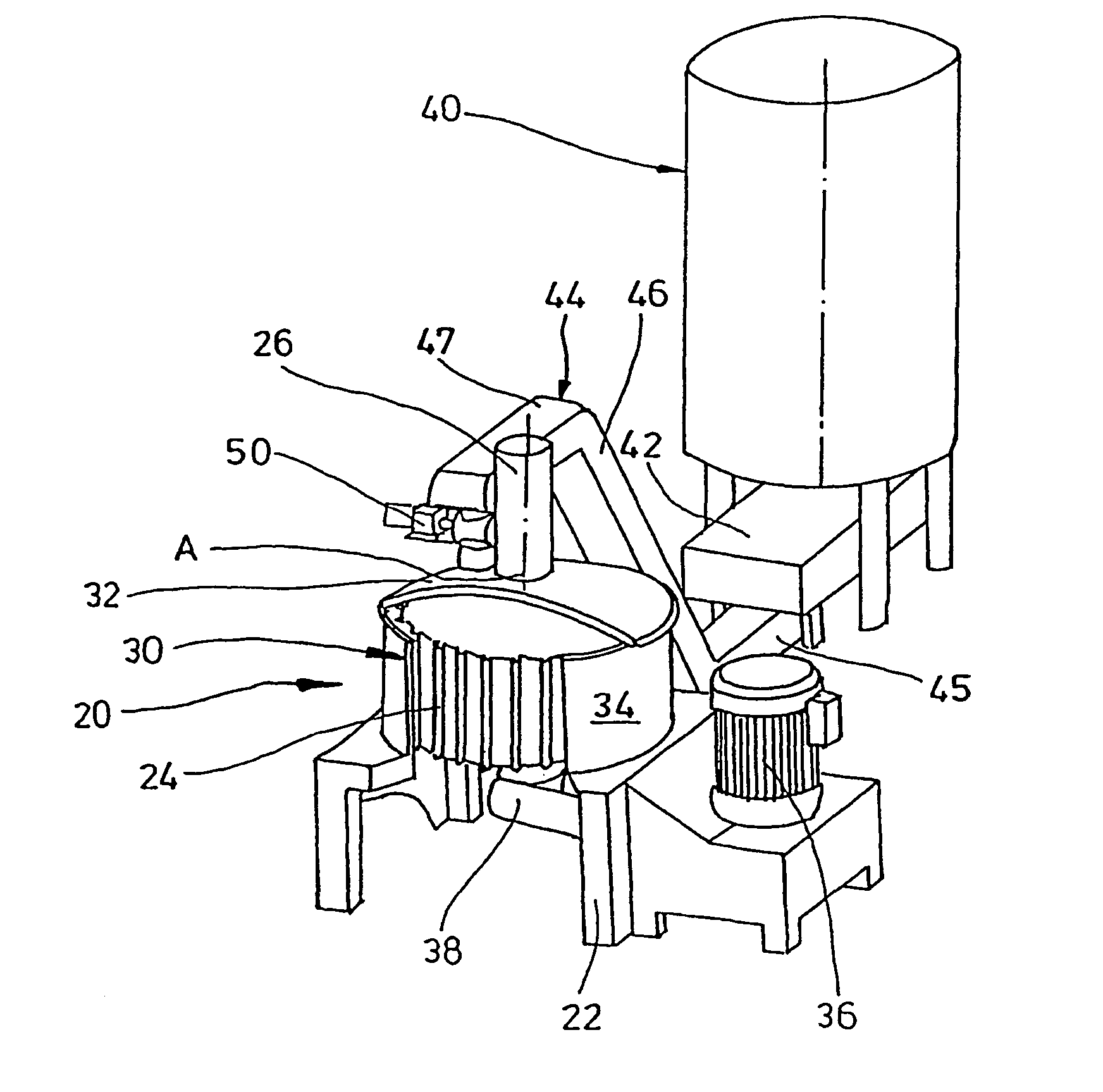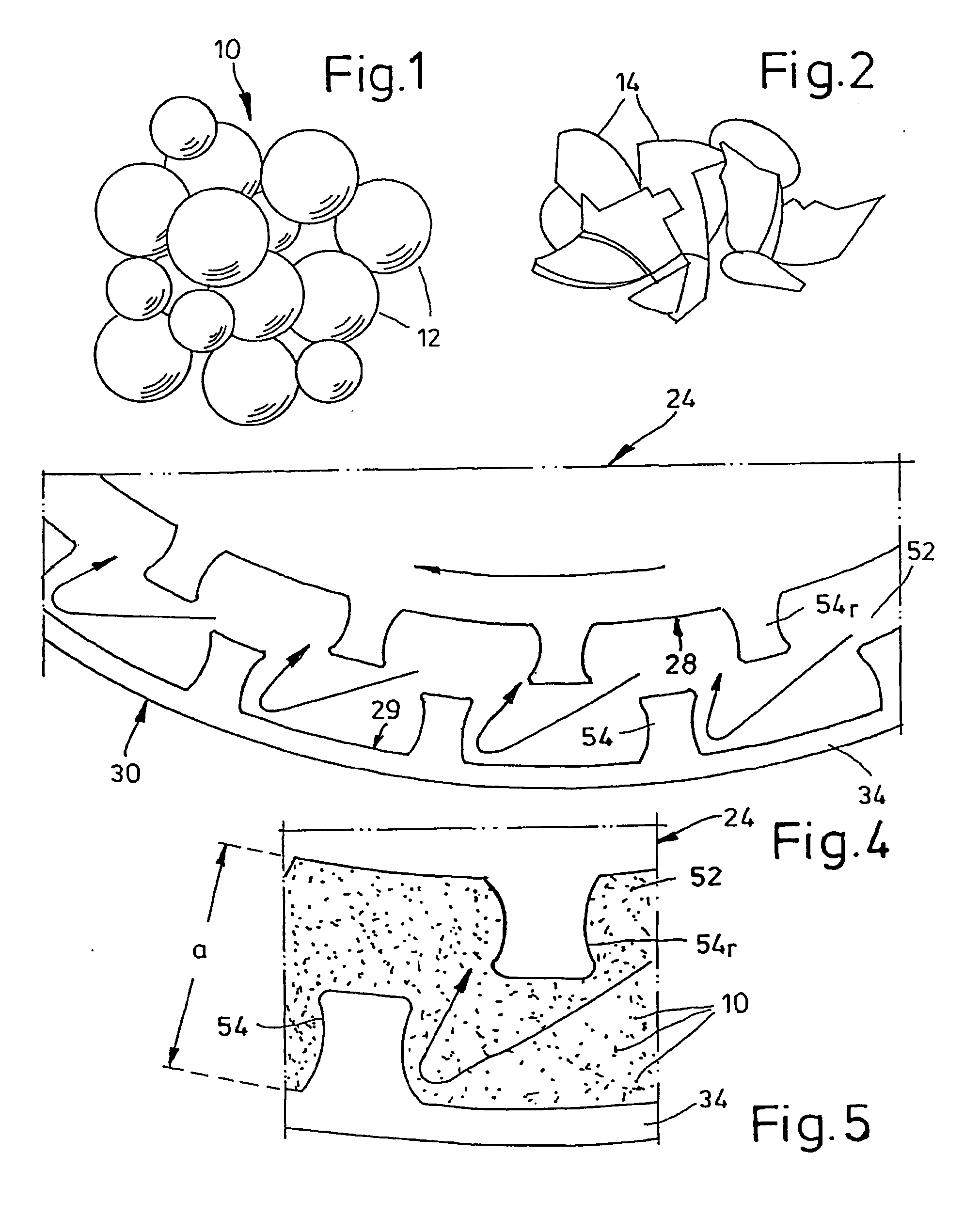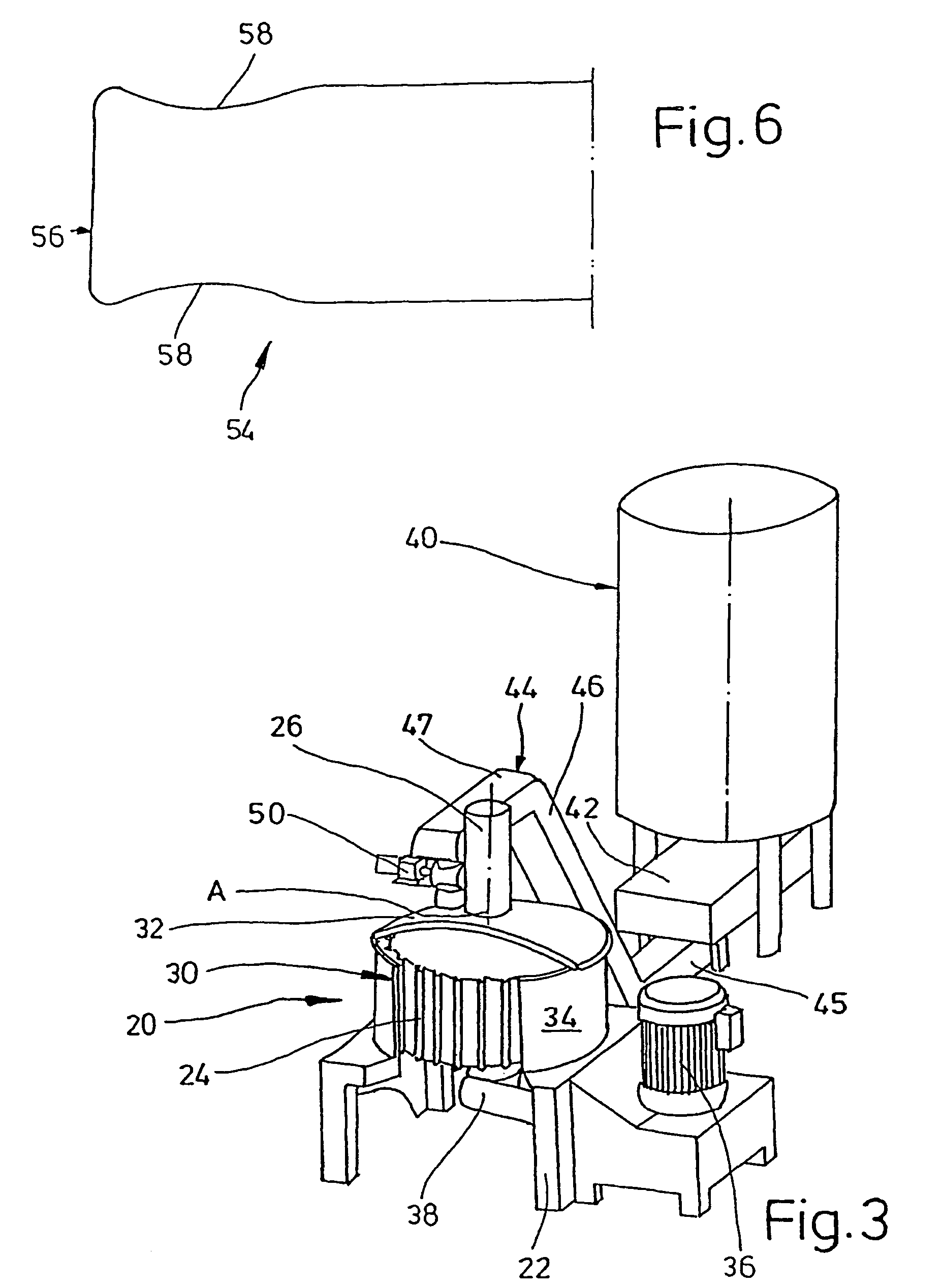Method for the production of a hydraulic binding agent a structural component use thereof and device therefor
- Summary
- Abstract
- Description
- Claims
- Application Information
AI Technical Summary
Benefits of technology
Problems solved by technology
Method used
Image
Examples
Embodiment Construction
[0115]FIG. 1 shows a heap of debris 10 consisting of spherical constituents 12. By subjecting this mixture to high mechanical stress in an activator (described below), the product is crushed, as a result of which inter alia an increase in surface area is achieved. Moreover, the globular structures of a fly ash are altered such that an amorphous structure is produced. This structure promotes the binding process by hooking together the individual particles 14 formed by the comminution process, and increases the strength values, in particular the compressive strength and bending tensile strength.
[0116] As a result of the particles 12 colliding onto and against one another and the reflections occurring on the activator, shock waves propagate in the particles 12 and lead to splitting thereof into amorphous structures and to disruptions in the lattice structure within the particles, as shown in FIG. 2.
[0117] The comminution takes place in a so-called activator 20, which has a machine pl...
PUM
| Property | Measurement | Unit |
|---|---|---|
| Length | aaaaa | aaaaa |
| Length | aaaaa | aaaaa |
| Percent by mass | aaaaa | aaaaa |
Abstract
Description
Claims
Application Information
 Login to View More
Login to View More - R&D
- Intellectual Property
- Life Sciences
- Materials
- Tech Scout
- Unparalleled Data Quality
- Higher Quality Content
- 60% Fewer Hallucinations
Browse by: Latest US Patents, China's latest patents, Technical Efficacy Thesaurus, Application Domain, Technology Topic, Popular Technical Reports.
© 2025 PatSnap. All rights reserved.Legal|Privacy policy|Modern Slavery Act Transparency Statement|Sitemap|About US| Contact US: help@patsnap.com



